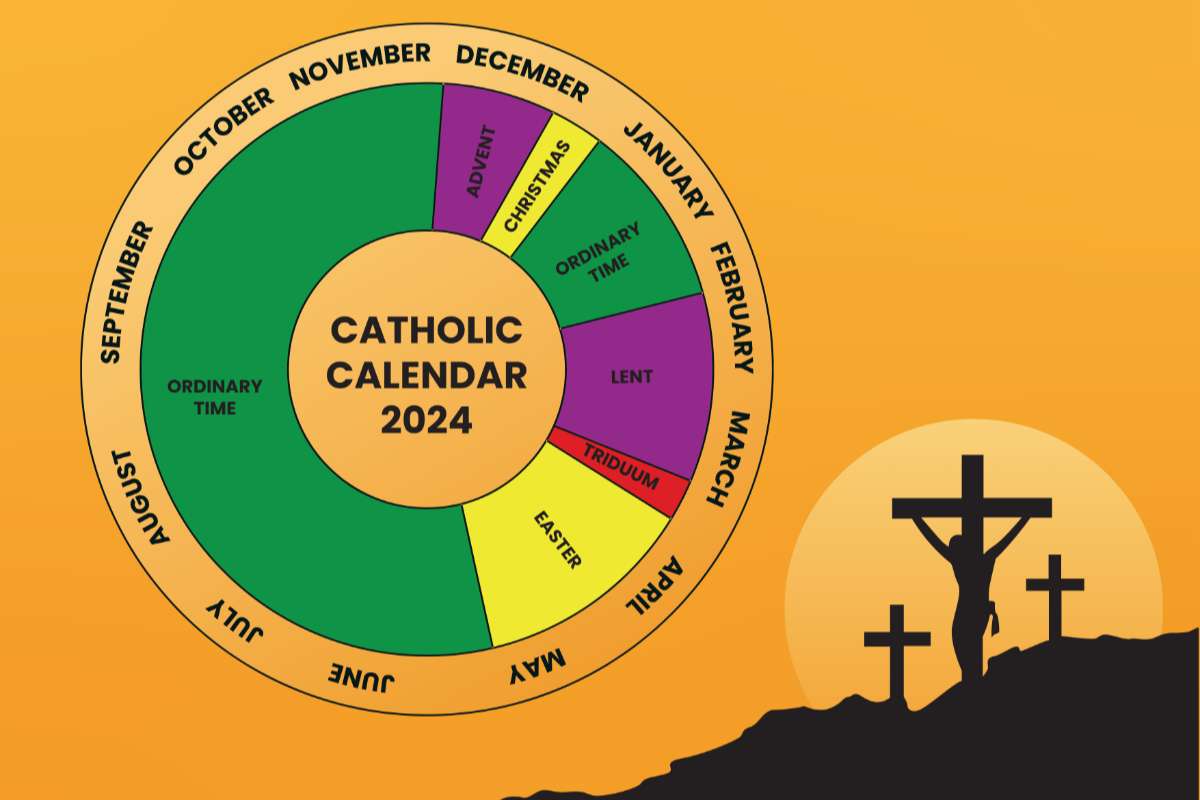The Liturgical Year and Calendar
The essence of the liturgical celebrations of the Church and their organization are encapsulated in the opening words of the Universal Norms on the Liturgical Year and the Calendar, derived from the Second Vatican Council’s Constitution on the Sacred Liturgy.
The liturgical year comprises two main cycles: the seasonal cycle, known as the Proper of Time, and the sanctoral cycle, called the Proper of Saints. Both are structured and presented in a liturgical calendar, enriched by local observances specific to national, diocesan, parish-level, or religious community traditions. Throughout these cycles, the Paschal Mystery of Jesus Christ—his suffering, death, and resurrection—is continuously proclaimed and renewed, encompassing the events of his life as well as the feasts of the Blessed Virgin Mary and the saints.
The Liturgical Year
The liturgical year unfolds through six distinct seasons:
Advent: Four weeks of anticipation preceding the celebration of Jesus’ birth.
Christmas: Commemorating the Nativity and manifestation of Jesus Christ to the world.
Lent: A period of six weeks devoted to penance leading up to Easter.
Sacred Paschal Triduum: The holiest “Three Days” in the Church’s calendar, marking Jesus’ suffering, death, and resurrection.
Easter: A 50-day jubilant celebration of the Lord’s resurrection and the outpouring of the Holy Spirit.
Ordinary Time: Divided into two parts, one following Christmas and the other after Easter, allowing reflection on the entirety of Jesus’ teachings and ministry.
The unfolding mystery of Christ’s life invites us to embody his mystery in our own lives. This invitation finds embodiment in the lives of Mary and the saints, celebrated by the Church throughout the year. There is a beautiful harmony between the mystery of Christ and the celebration of the saints. The Blessed Virgin Mary is intricately linked to her Son’s redemptive work, while the feasts of the saints testify to Christ’s marvelous deeds in his servants and provide models for the faithful to emulate.
Each liturgical year commences on the First Sunday of Advent of the preceding calendar year (e.g., the 2020 liturgical year began on the First Sunday of Advent in 2019).
The Liturgical Calendar
The arrangement of the liturgical year is regulated by the Church and consolidated into a liturgical calendar.
The Second Vatican Council emphasized Sunday as a distinctive liturgical observance: “The Lord’s day is the original feast day,” and it “must be observed in the universal Church as the primordial holy day of obligation.” Consequently, only a select number of feasts of the Lord or the saints can supplant the Sunday celebration.
Saints and other commemorations are classified based on their significance: Solemnities, Feasts, or Memorials. Sundays and Solemnities commence their celebration the preceding evening, while Feasts and Memorials are observed over a single day. Memorials are further categorized as Obligatory or Optional.
Holy days of obligation mandate the faithful to participate in Mass and abstain from unnecessary work or activities that hinder suitable relaxation of mind and body. Each Sunday is a holy day of obligation, alongside six Solemnities observed as feasts of precept in the United States.
Additionally, there are other prayer days and special observances endorsed by the Holy See or the USCCB. While not integral to the liturgical calendar, they serve to focus the Church’s prayers on the particular needs of humanity.
Roman Calendar Changes
The General Roman Calendar encompasses “both the entire cycle of celebrations of the mystery of salvation in the Proper of Time, and that of those Saints who have universal significance and therefore are obligatorily celebrated by everyone, and of other Saints who demonstrate the universality and continuity of sainthood within the People of God” (Universal Norms on the Liturgical Year and the Calendar, no. 49).
Following the reforms of the Second Vatican Council, the General Roman Calendar was initially introduced in 1969 by Pope Saint Paul VI. Since then, it has undergone several revisions by the Holy See, incorporating new commemorations. The most recent significant update occurred in 2002.

